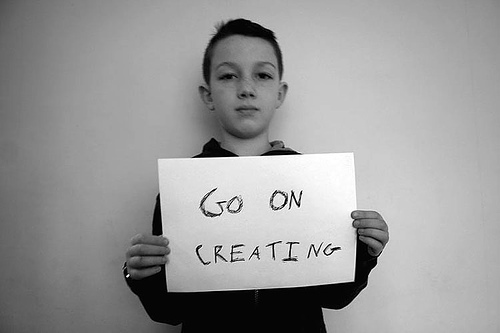
Whilst perusing Facebook as I’m wont to do, I came across this quote on Elephant Arts:
“A piece of art is never a finished work. It answers a question which has been asked, and asks a new question.” ~ Robert Engman
It brought to mind something I have talked with my Developmental Reading students for a long time now. That is, as an artist has an unspoken dialogue with a stranger (the viewer) sometime in the future (after the piece is submitted to others), so does an author have a dialogue with his reader.
My students, by and large, are non-readers. They choose not to read. They are not interested in the written word. My job is to open the door to the wonder of literacy.
I teach college and high school students to read. Some of them contend with learning disabilities. For them to succeed it is imperative that I help stem this tide of inertia. Literacy is essential. A person who has no background knowledge has no connection to and no interest in the subject at hand.
Making connections.
The key to making reading interesting. It is necessary to connect with the author and with one’s own past. The regular reader takes for granted these elements of engagement, which must be taught to the non-reader. When we practice and generalize these skills we suddenly find oneself immersed in the universe between the pages.
We have incrementally learned to make those connections. We discuss contemporary music, Fred Astaire (who?), the Holocaust, hunting and fishing, current events, religion and politics (always with heated tangents) and more. We read articles and passages about banking, war, the economy, Michael Jackson, cellphone etiquette, pregnancy, terrorism, driving, Leonardo and Andy Warhol, parenting and so much more. Our discussions are paired with carefully selected texts in a deliberate attempt on my part to pique interest and hone reading skills.
Is a book ever finished? Not until the reader injects his own schema and persona. Is the work of art ever finished? Not until the viewer in the gallery completes the circle.
Even then, there are more viewers and more points of view as a new audience comes along.
A book, a painting, any creative endeavor by one human shared with another contains an element of mystery and of eternity. Of course, this is precisely why we make things. To leave a legacy, to be remembered, to make connections now and in the future. This leaves a time stamp for our progeny to know that we were here, we thought and felt, we mattered. And we still do.
It’s all too charming to think of an artisan tinkering and a writer eking out a concept, word by word, in a garret (always a garret). How they are compelled to do this work and how years later it resonates with us. And as we think of the creator, waking up at 5:00 a.m. to write for hours before he goes to the cafe to drink absinthe with his contemporaries, we must also realize that without this desire to create we would have no one at the other end. No viewer, no student in my classroom struggling to catch up on reading skills, on cultural literacy, on being an educated adult, a contributor, a force. There would be no questions, no answers, no material culture. It would be time for the human species and all around us to turn back into stardust, to be tossed back into the vastness of space to wait for the next quirk in the cosmos to begin anew.
So Robert Engman was right. A piece of art is never finished. Our creations become a part of the world. They shape us long after their creators laid hands on them for the very last time.
Love elephant and want to go steady?
Sign up for our (curated) daily and weekly newsletters!
Author: Elizabeth Joseph
Apprentice Editor: Paul Semo / Editor: Catherine Monkman
Photo: fotologic/Flickr






Read 0 comments and reply